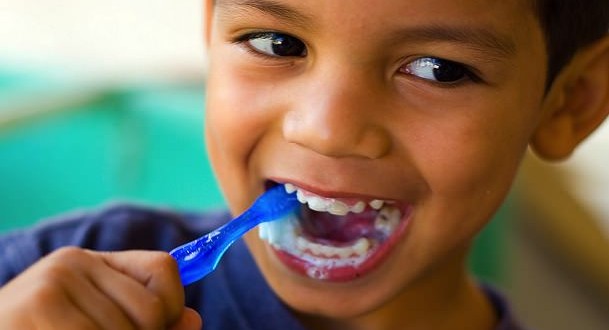Fluoride is an effective method of preventing cavities in children, according to the American Academy of Pediatrics.
New guidelines recommend parents start using small amounts of fluoride toothpaste as soon as children get their first tooth.
Data from the Centers for Disease Control and Prevention show that although there have been “notable declines in tooth decay among children and adults over the past three decades, tooth decay remains the most common chronic disease of children.”
The latest statistics from the CDCP show tooth decay affects 25 percent of all children ages 6-11 and 59 percent of adolescents aged 12 to 19 years. As well, at 15 percent, tooth decay is four times more common than asthma among adolescents aged 14 to 17 years.
The AAP, an organization of about 62,000 primary care pediatricians, pediatric medical sub-specialists and pediatric surgical specialists, has issuing the following new dental care guidelines:
Fluoridated toothpaste is recommended for all children starting at tooth eruption, regardless of caries risk.
A smear (the size of a grain of rice) of toothpaste should be used up to age 3.
After age 3, a pea-sized amount may be used. Parents should dispense toothpaste for young children and supervise and assist with brushing.
Fluoride varnish is recommended in the primary care setting every 3-6 months starting at tooth emergence.
Over-the counter fluoride rinse is not recommended for children younger than 6 years due to risk of swallowing higher-than-recommended levels of fluoride.
The pediatric group notes that, because fluoride is available through several sources, including food and tap water, and, beyond that, may also be given to children at home and professionally applied, “pediatricians should be aware of the risks and benefits of various fluoride modalities to appropriately advise families to achieve maximum protection against dental caries, and to help counsel patients about proper oral health.”
Agencies/Canadajournal
 Canada Journal – News of the World Articles and videos to bring you the biggest Canadian news stories from across the country every day
Canada Journal – News of the World Articles and videos to bring you the biggest Canadian news stories from across the country every day




The Fluoride ion is a systemic, cumulative protoplasmic poison that should be removed from all waters and not be added to any tap water.
Marketing it as a dental cavity prophylactic does not change its nature: there is no way it can alleviate tooth decay, but an only make things worse by causing teeth to become more brittle, so, more easily breakable.
Long term ingestion causes its worst damage during teeth formation, causes dental fluorosis, not a cosmetic condition, but a trauma to teeth that is irreparable; dental fluorosis now exceeds 40% in North America and fills the coffers of dentists in attempts to hide and repair such damage.
On the way to the teeth, the Fluoride ion damages many parts of our bodily systems such as our bones, the pineal gland, the brain, to name only a few.
Fluoridation is the most disastrous medical intervention of the 20th century.
Water if for everyone – Fluoride is not.